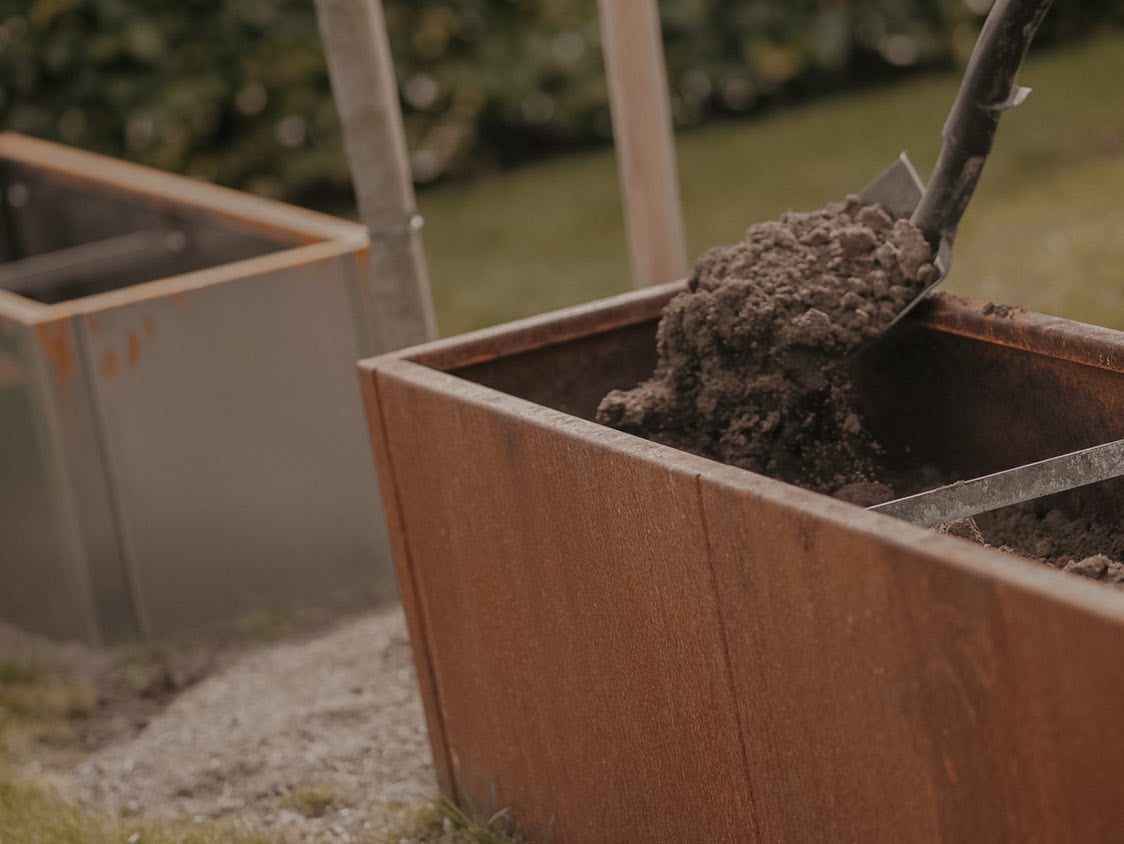Soil is not just soil
Soil for your planter boxes and raised beds
When choosing soil for your raised beds and planter boxes, it's important to choose a soil that is nutrient-rich and has a good structure. A good soil should be able to retain water and air while allowing drainage so that the roots can thrive.

Which soil should you choose for
Raised beds
Rich in nutrients
When planting edibles such as vegetables and lettuce in raised beds, it's important to choose a soil that is nutrient-rich, well-drained and free from toxins and pollution. A good raised bed soil for edible plants can be made by mixing different types of soil and adding organic material, such as compost or manure.
Soil mixture
You can also add other materials such as coconut fiber or perlite to improve drainage and air circulation in the soil. A good soil mix for raised beds can for example consist of a mixture of garden soil, compost and sand or perlite. You can also buy special raised bed soil in garden centers and nurseries that is formulated for the purpose. These soils are often composed of different materials that provide a good balance of nutrients, water and air.
PH-value
It's important to avoid soil that is too heavy and clayey as it can clog and hinder drainage. Conversely, you should also avoid using soil that is too light, which can dry out quickly and lose nutrients.
It's also a good idea to check the pH of the soil and adjust it to the optimal level for the plants you want to grow. Most vegetables and salads thrive best in soil with a pH between 6.0 and 7.5.
Natural fertilizer
Finally, you may want to add fertilizer or other nutrients to the soil to ensure your planted plants get the necessary nutrients to grow and produce a good harvest. Natural fertilizers (e.g. raised bed mulch or compost) are often preferable as they release nutrients slowly over time and help build long-term soil health and fertility.
Which soil should you choose for
Planter boxes
Rich in nutrients
When planting flowers in planters, it's important to choose a soil that is nutrient-rich, well-drained and suitable for the specific type of flowers you want to grow. In general, however, it's a good idea to choose a soil that has an appropriate amount of organic matter and nutrients.
Great garden soil
A good soil for flowers in planters can be made by mixing garden soil with compost or manure. You can also add other materials such as sand or perlite to improve drainage and air circulation in the soil.
PH-value
You may also want to check the pH of the soil and adjust it to the optimal level for the flowers you want to grow. Some flowers thrive best in an acidic soil, while others prefer a more neutral or alkaline soil. You can find information about the optimal pH for the flowers you want to grow by searching online or asking a gardener.
Fertilizer
Finally, you may want to add fertilizer or other nutrients to the soil to ensure that your flowers get the necessary nutrients to grow and bloom.
What is the difference between
Raised bed mulch and sphagnum
Raised bed mulch is a soil mixture specifically designed for use in raised beds. It is usually a mixture of different types of soil, organic matter and nutrients that are suitable for supporting the growth and development of planted plants in raised beds. Raised bed mulch is often more nutrient-rich than regular garden soil and is also more well-drained, which helps prevent flooding and root rot (rotting of the roots of the plants).
Raised bed mulch can also contain different types of additives that can help improve soil structure and pH levels.
Raised bed mulch is specially formulated to provide plant material with the necessary nutrients and structure to thrive in raised beds.
Sphagnum is a type of organic material often used in gardening. It is usually made from moss that has been decomposed and processed into a peat or turf-like material. Sphagnum has a high water-holding capacity, making it suitable for improving soil moisture and drainage. It is also often used as an addition to soil mixes because it helps improve soil structure and air circulation.
For raised beds, sphagnum can be used as part of the soil mix, but it is usually not sufficient on its own as it does not contain enough nutrients to support the plants in the raised bed.

We recommend buying soil and topsoil from: Gruslevering.dk
Below you can find a quantity calculator to give you an idea of how much soil you need for your planter boxes and raised beds.
Find their quantity calculator here: Quantity calculator.


